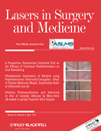Effects of 635nm light-emitting diode irradiation on angiogenesis in CoCl2-exposed HUVECs†
Won Bong Lim and Ji Sun Kim contributed equally to this work.
Abstract
Background and Objectives
It is recognized that hypoxic/ischemic conditions leading to production of reactive oxygen species (ROS) are an important mediator of angiogenesis in the wound-healing process. Recently, low level light irradiation at 635 nm, which is used in many clinical fields, was found to decrease intracellular ROS levels, and consequently alleviate oxidative stress. The purpose of the present study was to investigate the effects of 635 nm light-emitting diode (LED) irradiation on angiogenesis in human umbilical vein endothelial cells, in an in vitro CoCl2-induced severe hypoxia model.
Study Design/Materials and Methods
The effects were assessed on cell viability, tube formation, hypoxia-inducible factor-1, vascular endothelial growth factor (VEGF), VEGF-1 and -2 protein expression, mitogen-activated protein kinase (MAPK) phosphorylation, and ROS dissociation.
Results
The results showed that, under hypoxic/ischemic conditions, irradiation with 635 leads to reduced production and increased scavenging of intracellular ROS, which results in alleviation of VEGFR-1 suppression, enhanced VEGF expression and ERK MAPK activation, and subsequent acceleration of angiogenesis with improved cell viability and tube formation.
Conclusion
Taken together, irradiation with 635 nm was shown to reduce intracellular ROS production, which results in increased angiogenesis. Thus, we suggest that irradiation with 635 nm accelerate angiogenesis under hypoxic/ischemic conditions, and may prove to be a useful alternative tool in wound healing. Lasers Surg. Med. 43:344–352, 2011. © 2011 Wiley-Liss, Inc.




